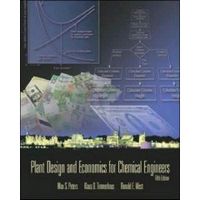Handbook of Chemical and Environmental Engineering Calculations

Because of the ubiquitous nature of environmental problems, a variety of scientific disciplines are involved in the development of environmental solutions. The Handbook of Chemical and Environmental Engineering Calculations provides approximately 600 real-world, practical solutions to environmental problems that involve chemical engineering, enabling engineers and applied scientists to meet the professional challenges they face day-to-day. The scientific and mathematical crossover between chemical and environmental engineering is the key to solving a host of environmental problems. Many problems included in the Handbook are intended to demonstrate this crossover, as well as the integration of engineering with current regulations and environmental media such as air, soil, and water. Solutions to the problems are presented in a programmed instructional format. Each problem contains a title, problem statement, data, and solution, with the more difficult problems located near the end of each problem set. The Handbook offers material not only to individuals with limited technical background but also to those with extensive industrial experience.
download here




